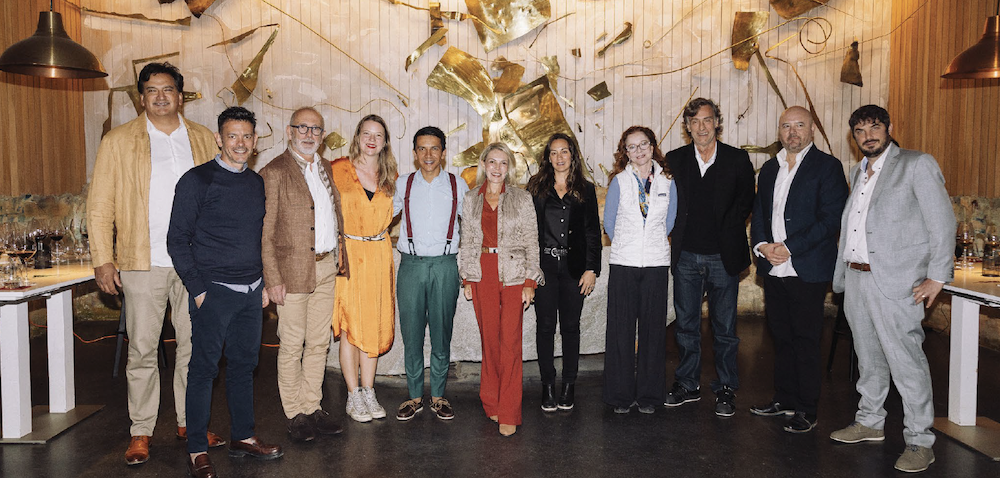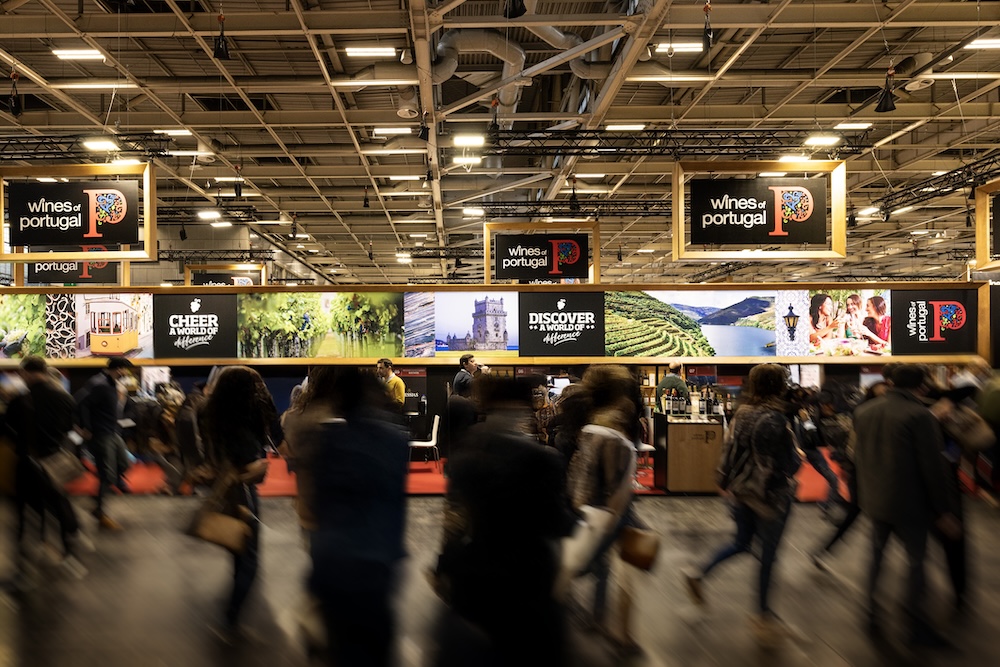
Discovery

Discovery
By Isabelle Escande - Photographs: courtesy of the estates, posted on 31 January 2023
With 250 native grape varieties, Portugal is enough to make other producer countries go green with envy. Comparing them with international standards is like comparing apples and oranges and just-burgeoning awareness means that they remain largely under the public’s radar. Heading off to explore Portugal’s vine heritage is like stepping into the shoes of a treasure hunter, away from the well-trodden vinous paths.
In addition to its myriad native grape varieties, Portugal also boasts a winegrowing culture that dates back to Antiquity along with extremely varied vineyard sites. In fact, for many years, older generations valued the soils where the grapes came from more than the grape variety itself. The varieties resided together naturally in the vineyards and sometimes winegrowers did not even know which grapes they farmed. The soils had greater significance and of course, Portugal has a real tradition of blending.
As the New World wine countries have emerged, market trends have evolved and a taste for single-varietal wines began to gain traction, piquing the curiosity of Portuguese producers. They started taking a closer look at their grape varieties, particularly the native iterations, and fermenting them separately. Fortunately, the art of blending in the country has been preserved – most Portuguese wines are blends – but thanks, inter alia, to new-found knowledge of the plants, it has reached levels of perfection worthy of the finest wines.
Native grape varieties now play their part in the great variety of Portuguese wine styles. As they cannot all be presented, we have selected four of the most renowned varieties for red wines – Baga, Touriga Franca, Aragonez, and the most famous of them all, Touriga Nacional. And who better to speak about them than the wineries who grow and vint them?

The typical variety of the Barraida region where, in the past, it accounted for nearly 90% of the varietal range, Baga is not an easy grape variety to work with. Despite this, some producers have successfully leveraged its aromatic potential through their efforts and perfectionism. It is now selected to produce quality wines.
To find out a little more about the variety, we met up with a prominent co-operative in the Bairrada appellation in the Centre-West of the country, Adega de Cantanhede. It also happens to be the first bodega to win a gold medal for a Portuguese wine entirely made from a native grape variety in an international competition in 1997. No prizes for guessing which grape variety!
The co-operative, which boasts Baga vines over 90 years old, has for several years made it its mission to preserve this heritage and promote these vines with their limited yields which thrive on the region’s clay-limestone soils. “Limestone promotes good soil drainage and retains heat, expediting the ripening process and controlling acidity and therefore the astringency of the tannins”, explains the winery’s winemaker Osvaldo Amado. “Also, clay retains water during the hottest summer days, so that we don’t have to use irrigation. It also helps produce more balanced wines with more pronounced density”.

The region’s gentle rolling countryside and the location of the vineyards, some twenty kilometres from the coast, have also driven quality winegrowing. “The cool temperatures and frequent morning fog from the Atlantic reach the most inland parts of the area, promoting balanced ripening even during the hottest summer days”. Rainfall towards the end of the season, however, can have harmful consequences for the grape variety which, with its particularly thin skins, is very prone to grey mould or Botrytis Cinerea. Fortunately, there are environmentally-friendly solutions and they are increasingly used. They include grass cover – where cover crops are grown between the vine rows – meticulous, intermittent leaf removal and early harvesting. Baga also needs a little attention in the winery, admits the winemaker. The berries, which are naturally rich in tannins, are entirely destemmed at the winery to ensure softness in the wines. This is followed by alcoholic fermentation at 28°C and gentle maceration, where the rack-and-return process is the favoured option. Maturation is nearly always conducted in French oak casks which polishes Baga’s firm tannins. The red wines produced from the variety can be ranked among the Portuguese wines with the longest cellaring capacity, adds Amado. “They mature elegantly and fully retain their character for several decades”.
Another of the variety’s features is most certainly its versatility. Baga is used by the winemakers at Adega de Cantanhede to make deeply coloured red wines, with vibrant aromas of wild berries and black plum, boasting crisp acidity. Incorporating the nobility of French oak to perfection, they reveal notes of coffee, dried grass, tobacco and smoke. But that’s not all! Baga also comes in a variety of wine styles, from rosés, ‘blancs de noirs’ and other sparkling wines to fortified offerings. These sell equally well in the domestic market and abroad, where sales are booming. This is one treasure that should be explored posthaste!

The winery has Baga vines over 90 years old.


Previously known as Touriga Francesa – despite the fact that there is no connection with France – this grape variety is one of the most widely grown in Portugal. It is an easy variety to work with and thrives on schist soils with low fertility, explains winemaker João Maria Portugal Ramos. He is the son of João Portugal Ramos, one of Portugal’s most internationally renowned winemakers, who has made a significant contribution to the reputation of Portuguese wines over the past twenty years. João Portugal Ramos and his team now produce wines in four regions across the country but they grow Touriga Franca in the Douro and Alentejo regions. João Maria Portugal Ramos admits, though, that the best results are obtained in the Douro Superior, where the weather is hot and dry.

This native variety is resistant to water stress and uses its leaves to protect its clusters from direct sunlight. With its long growing season and moderate yields, it can be harvested by hand or machine. But on this particular estate, the Touriga Franca grapes are generally picked by hand. Touriga Franca produces very structured, complex wines with lots of volume on the palate. These features are essential for producing high quality Port, explains João Maria Portugal Ramos. The variety is therefore used to produce the storied Portuguese fortified wine, but not just for that. Blended with other grape varieties, it forms the basis for several other estate reds. “It is a good age-worthy variety but must be blended with a variety with higher acidity to produce the best ageing potential”. Here, the wines are matured in tanks and wood. Those made from Touriga Franca are very deeply coloured and offer up delicate, intense aromas of wild flowers, violet, red fruits and dried spices, yielding powerful but elegant pours.

Aragonez is none other than the star variety of Rioja and Ribera del Duero, Tempranillo, under its Portuguese name. It is also known as Tinta Roriz in the Douro Valley. In Alentejo, located near Lisbon, it is one of the ten most widely grown grape varieties. “Aragonez is a grape variety that adjusts well to different soil types and climates, but to produce outstanding quality, sandy and clay-limestone soils in hot, dry climates need to be favoured. This leads to smaller, more concentrated berries”, explains Nelson Rolo, the head winemaker at bodega Morais Rocha, which has 18 hectares of vines in Vidigueira, approximately 200 km from the capital in the southern part of the country. For the Alentejo winery, this red variety plays a pivotal role because it is used to make sparkling and rosé wines, and of course Reserva reds. For the reds, the fruit is picked by machine at night in order to preserve freshness, whereas for the other styles, the grapes are picked by hand. Aragonez is an early-ripening variety and therefore one of the first to be harvested, explains Rolo. “Emphasis is placed on acidity and the right pH level”

As soon as the fruit arrives in the winery, it undergoes cold (7°C) pre-fermentation soaking to promote aromatic intensity in the must. Aragonez is used in blends with other grape varieties that complement each other. “I particularly like the combination of Trincadeira, Alicante Bouschet and Cabernet”, admits the winemaker. Wines from Aragonez are very elegant and dense with substantial structure on the palate. They reveal notes of blackberries, plums and black fruits along with a faint spicy, cinnamon-dominant touch. They are very popular and boast great ageability, selling both domestically and internationally.


This is indeed, Portugal’s best known grape variety, used to make its storied Ports, but also the country’s finest red wines. Although it is well-established in the Douro Valley, it is also grown in Alentejo and in the Dão region in central Portugal, where before the phylloxera outbreak it covered 90% of vineyard area.
Even though it produces low yields – which is often a guarantee of quality – Touriga Nacional is a late-ripening variety, making it less prone to spring frosts. It is also particularly resistant to the heat and fungal diseases, particularly powdery mildew, due to its thick skins. These positive viticultural attributes combine with its substantial versatility. At the family-run estate Casa Santos Lima, which produces wines in five regions across Portugal, it is used for producing and blending red wines but also rosés and sparkling wines. Touriga Nacional boasts good ageability and delivers darkly coloured and very tannic, powerful and structured wines. Displaying great aromatic complexity, they offer varied aromas of black fruits, leather, graphite, violet and cacao.
Touriga Nacional-based wines are intense and fruity and appeal to audiences far and wide, and not just in Portugal. Most of Casa Santos Lima’s wines are in fact sold internationally, explains manager José Luis Santos Lima. The variety itself has also been exported and is now grown in Australia and California, for instance, where it seems to be increasingly gaining traction. Climate change has strengthened the appeal of this aromatic and robust variety in recent years. In the vineyards of Bordeaux, for instance, it is being grown on an experimental basis. Watch this space…

Discovery

Discovery

Discovery